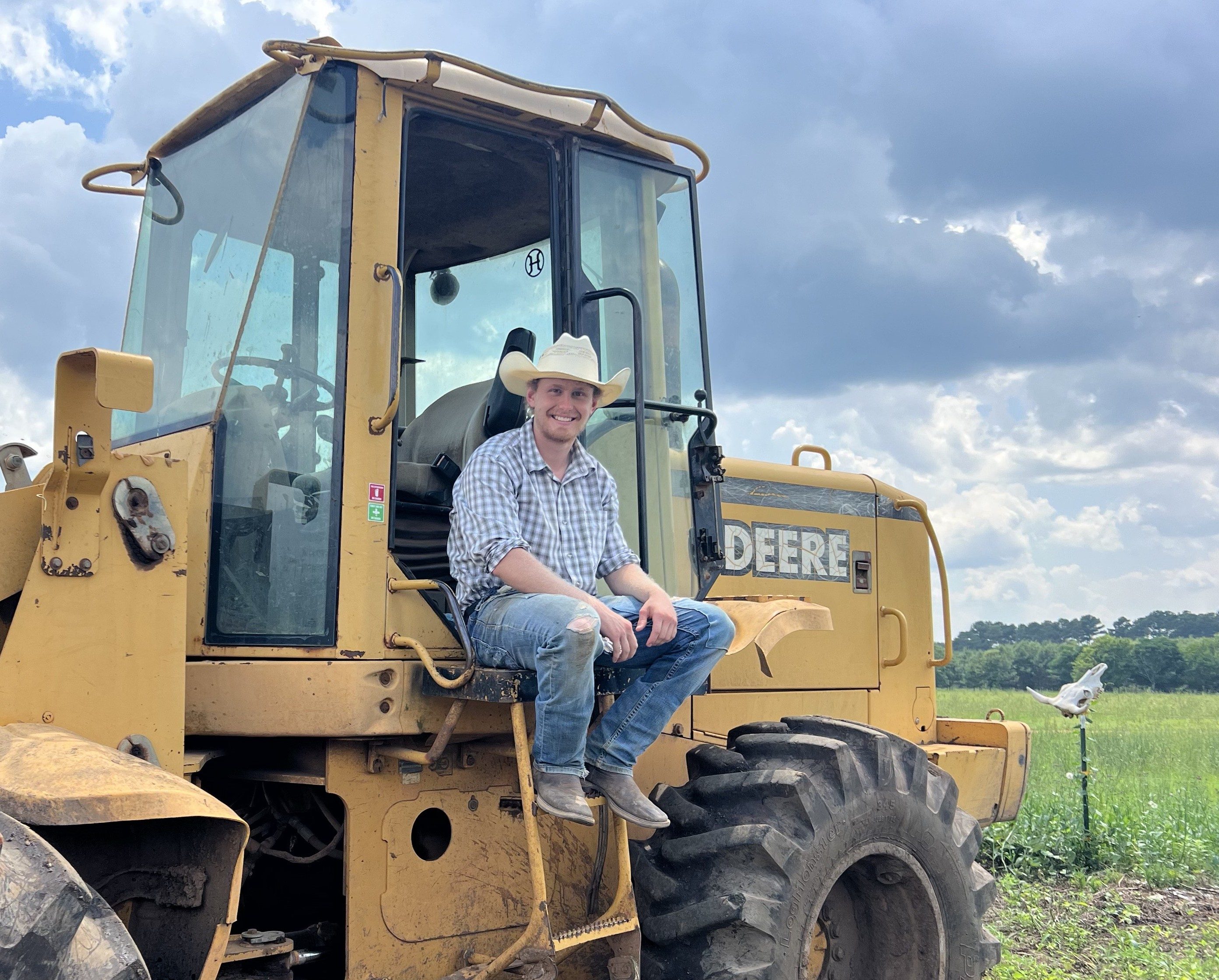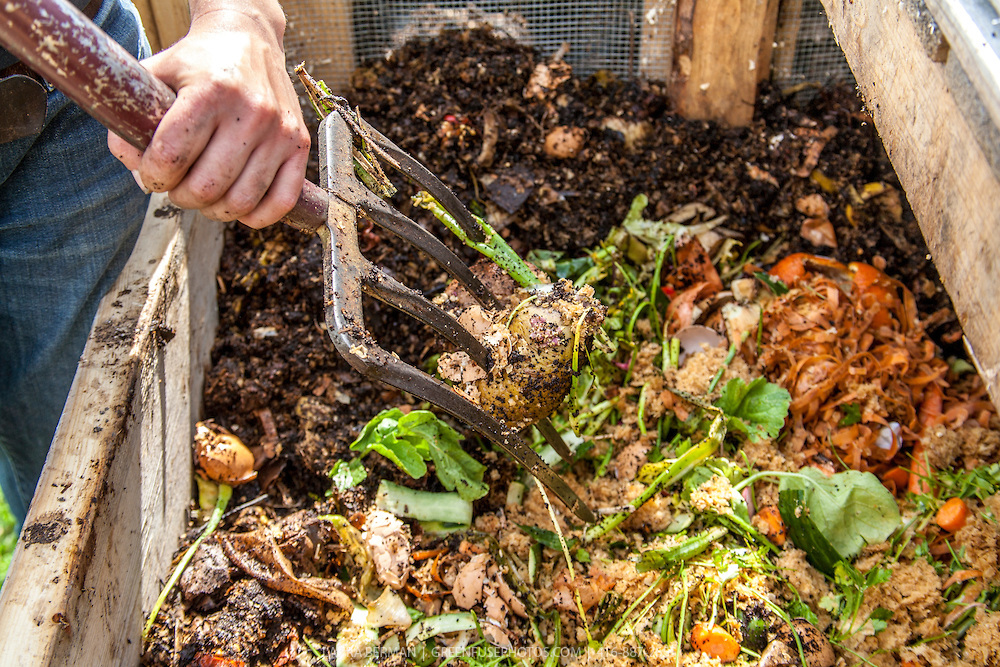TheFarmersDigest
The Farmers Digest
May 23, 2025

Editor
Chris Pigge

Editor
Miles Falk
Gardening for Beginners: Getting Ready to Grow
So you want to grow some of your own food? Good news—it's way easier than most people make it sound. Forget the fancy terminology and complicated instructions. If plants could talk, they'd tell you they've been growing just fine for millions of years without humans fussing over every detail.

A Word From the Editor
If you're reading this article then odds are you are interested in starting your own garden or improving an existing one. While there are obvious benefits to gardening, such as fresh air and fresh food, there are also less obvious benefits.
It will also provide precious experiences and time with those you love. Some of my earliest memories are picking potatoes with my family or learning how to can green beans with my grandma. The experiences of gardening will provide you and your children and loved ones with powerful memories that go far beyond sunlight and fresh food.
Your kids could learn about how things grow, work hard and appreciate nature. They could develop a love for natural processes. They could get away from the video games and develop a hunger for the outdoors and the knowledge nature can teach people. It is for these reasons above all else that my family tends a garden and I hope yours will too!
- Chris Pigge
The Magic of How Plants Grow
Let's start with something amazing: plants make their own food out of thin air, water, and sunlight. They breathe in the carbon dioxide that we breathe out, and using the energy from sunlight, they transform it into sugars and plant material. Think of leaves as tiny solar panels and food factories all in one.
The plant uses this self-made food to grow everything you see—stems, leaves, flowers, fruits—and also builds roots underground. Those roots not only anchor the plant and absorb water and nutrients, but they also store some of that carbon the plant pulled from the air. When plants die, that stored carbon becomes part of the soil. That's why good soil is dark and rich—it's full of carbon that plants put there. Pretty neat, right? Plants are literally building themselves out of air, sunshine, and water.
This is why sunshine is so important—without it, plants can't make their food. Water is crucial too, since it's both an ingredient for making food and the delivery system that carries nutrients through the plant. Understanding this simple process helps everything else about gardening make more sense.
Finding Your Spot
The first step in your gardening journey is finding the right location. Since plants need sunlight to make their food, most vegetables need a spot that gets at least six hours of direct sunlight daily. Research from multiple university extension services confirms that six hours is the minimum for most vegetables, though leafy greens can grow with less.
Walk around your available space at different times of day and notice where the sun lingers longest. That's your garden spot.
Don't worry if you only have partially sunny areas. Leafy greens like lettuce and spinach, along with herbs like mint and parsley, can thrive with just four hours of sun. They're perfect for spots that get morning sun but afternoon shade.
Beyond sunlight, consider convenience. The best garden location is one you'll naturally see and pass by during your daily routine. Gardens tucked away in far corners often get forgotten. You want your garden where a quick glance reminds you to water, harvest, or spend a few minutes pulling weeds. Proximity to a water source also matters—lugging watering cans long distances gets old fast.

Containers or Ground
Many beginners agonize over whether to plant in containers or directly in the ground. The truth? Both work perfectly fine, and your choice should depend on your available space and situation.
Container gardening offers tremendous flexibility. You can grow on balconies, patios, or even sunny windowsills. Almost any container works as long as it has drainage holes in the bottom to prevent roots from sitting in water. Larger containers—about bucket-sized or bigger—are more forgiving for beginners because they don't dry out as quickly. Even repurposed five-gallon buckets with holes drilled in the bottom make excellent planters. The advantage of containers is that you control the soil completely, and you can move plants around to follow the sun or bring them under shelter during extreme weather.
For traditional in-ground gardens, starting small is the key to success. According to gardening experts at the University of Minnesota Extension, a 4×4 foot area can grow plenty of food for a beginner and won't become overwhelming. Begin by removing grass or weeds from your chosen spot, then loosening the soil with a shovel or garden fork so that roots can spread easily. Creating defined edges for your garden bed helps keep grass from creeping back in and gives your garden a tidier appearance.
Remember, a small garden that actually gets tended is infinitely better than an ambitious plot that becomes overwhelming.

If you're planting in containers, this part is easy: just buy a bag of potting mix and fill your containers. You're done!
For in-ground gardens, you'll need to prepare the area first. Let's break down what "removing grass and weeds and loosening the soil" actually means in practice:
- First, get rid of what's currently growing there. For a small 4×4 area, you can use a regular shovel to slice under the grass and flip it over (grass side down). Or simply dig it out completely and toss it. For areas without much grass, use a trowel or your hands to pull out all the weeds you can see. The goal is bare dirt with no plants growing in it.
- Now comes the loosening part. Imagine plant roots trying to push through soil—if it's hard-packed like concrete, those roots struggle. Your job is to make the soil fluffy and loose, like the chocolate cake mix before you add the liquids. You're not just poking a few holes; you're physically breaking up the dirt.
- Take a shovel, garden fork, or hoe and push it into the soil as deep as you can, maybe 6-8 inches. Then pull back on the handle to lift and turn the soil over. Move over a few inches and repeat. Keep doing this until you've covered your entire garden area.
- When you're done, the soil should look completely disturbed, with no remaining grass or weeds, and no chunks bigger than an orange. It should feel loose when you push your hand into it—like sticking your fingers into a loosely packed bag of brown sugar. This loose soil makes it easy for tender plant roots to grow and expand.
If your soil is really hard or clay-like (it sticks together in a ball when wet), mix in a bag or two of compost from the garden center. Just spread it over your loosened soil about 2-3 inches thick, then use your shovel to mix it in. This makes your soil even more root-friendly.
Garden Preparation By The Numbers
- 6+ hours Minimum amount of direct sunlight needed daily for most vegetable plants (University of Minnesota Extension, 2022)
- 4×4 feet Recommended size for a beginner's garden plot, producing enough vegetables without becoming overwhelming (Bartholomew, 2018)
- 6-8 inches Optimal depth for loosening soil to accommodate root growth (University of Illinois Extension, 2023)
- 2-3 inches Recommended thickness of compost to add to garden soil for improved fertility and structure (Cornell University Cooperative Extension, 2023)
- 1:3 ratio Suggested proportion of compost to potting soil when preparing container mixes (University of Illinois Extension, 2023)
Preparing Your Soil (Without a Farming Degree)
Soil Simplified
Good soil grows good plants, but beginners often get intimidated by complicated soil advice. The truth is, you don't need to understand soil chemistry or texture analysis to grow successfully. You just need some basics.
For containers, the solution is straightforward: buy a bag labeled "potting mix" or "potting soil" from any garden center. According to the University of Illinois Extension, you shouldn't use garden soil or topsoil in containers—it's too dense and won't drain properly. If you have access to compost, mixing some in improves the soil's ability to hold nutrients. A rough guideline is about one part compost to three parts potting soil, but don't worry about measuring precisely. If you don't have compost, the potting mix alone is perfectly fine to start with.
For garden beds, improving your existing soil is simple. Add a bag or two of compost from the garden center and mix it into your existing soil with a shovel or garden fork. If your soil seems really hard or clay-like, adding more compost helps loosen it up. Don't worry about achieving perfect soil—plants are surprisingly adaptable, and most common vegetables will grow reasonably well even in less-than-ideal conditions.
Choosing What to Grow
The most important factor in choosing what to grow isn't soil pH or sun exposure—it's what you actually like to eat. There's no point in growing perfect radishes if nobody in your household enjoys them. Start with vegetables your family already consumes regularly.
That said, some plants are particularly good for beginners. According to research from Cornell University Cooperative Extension, lettuce and other salad greens grow quickly, often ready for first harvest in just a few weeks. Radishes mature in about a month, offering nearly instant gratification. Green beans have large seeds that are easy to handle, germinate reliably, and produce abundantly. Cherry tomatoes tend to be more forgiving than larger varieties and often produce right up until frost. Zucchini is famous for its abundance—one plant can often feed a family all summer. Herbs like basil, cilantro, and mint are expensive to buy but easy to grow, making them especially satisfying first projects.
Salad Greens
Lettuce, spinach, and other greens often provide harvests in as little as 3-4 weeks. They can grow in partial shade and are perfect for containers or garden edges.
Plant in early spring or fall when temperatures are cooler. Harvest outer leaves while leaving the center to keep producing.
Green Beans
With large, easy-to-handle seeds that germinate reliably, beans produce abundantly and improve soil by fixing nitrogen. Bush varieties don't need supports.
Plant after danger of frost has passed. Regular harvesting encourages plants to keep producing throughout the summer.
Cherry Tomatoes
More forgiving than larger tomato varieties, cherry types produce abundantly and continue until frost. They work well in containers or garden beds.
Start with purchased transplants for best results. Provide support with a simple stake or cage as plants grow.
Timing matters in gardening. Spring crops like lettuce, spinach, and radishes can be planted when nighttime temperatures consistently stay above 40°F. Summer crops like tomatoes, peppers, beans, and basil should wait until after your last expected frost date. Not sure when that is? Local garden centers sell plants when it's the right time to plant them in your area—a foolproof way to know when to plant what.
Starting With Seeds or Plants
One of the most common questions beginners ask is whether to start from seeds or buy young plants. The simple answer? Both approaches work, and each has advantages.
Buying young plants (called "transplants" or "starts") from a garden center gives you a significant head start and increases your chances of success. They cost more than seeds, but the confidence boost from seeing an already-growing plant can be worth it for beginners. Tomatoes, peppers, and many herbs are excellent candidates for purchasing as transplants.
Some vegetables actually perform better when planted directly from seed into their final growing spot. Studies from the University of Maryland Extension show that beans, radishes, carrots, and most salad greens fall into this category because they don't transplant well—their roots prefer to grow undisturbed from the beginning. For these, simply follow the directions on the seed packet for how deep to plant them. The general rule is to plant seeds about as deep as they are large.
Don't overthink this decision. Many successful gardens combine both approaches—some plants started from seed, others purchased as transplants. The important thing is getting something growing.
Keeping It Simple With Tools
Watching gardening shows or browsing garden centers might give you the impression that successful gardening requires a shed full of specialized equipment. Nothing could be further from the truth. Human beings have been growing food for thousands of years, often with nothing more than sticks and hands.
For a small beginner's garden, you need almost nothing beyond something to dig with (a trowel or small shovel), something to water with (a watering can or hose), and your hands (gloves are nice but optional). That's it! Everything else is just bonus equipment you can add later if you get hooked on gardening.
If you're gardening in existing soil rather than containers, a garden fork, full-sized shovel, or a hoe helps with initial soil preparation. But even these can be borrowed for that first setup if you're trying to keep costs down. The basic point is don't let lack of fancy tools stop you from starting—plants don't care what brand name is on your trowel.
Conclusion
Starting a garden doesn't have to be complicated or expensive. By focusing on the basics—adequate sunlight, reasonable soil, appropriate plants for your space, and consistent care—you can grow fresh food right outside your door. Remember that plants want to grow; our job is simply to provide reasonable conditions and get out of their way.
Gardening offers benefits far beyond the fresh produce it provides. The connection to natural cycles, the satisfaction of nurturing living things, and the joy of sharing homegrown food with others create experiences that can't be purchased. For children especially, gardens provide tangible lessons about patience, care, and the miracle of growth.
Start small, keep it simple, and enjoy the process. The perfect garden isn't the one that looks like a magazine cover—it's the one that actually gets planted, tended, and harvested by you and your family.
References
Bartholomew, M. (2018). All New Square Foot Gardening, 3rd Edition. Cool Springs Press.
Cornell University Cooperative Extension. (2023). Growing Guide: Vegetables.
Jeavons, J. (2017). How to Grow More Vegetables. Ten Speed Press.
National Gardening Association. (2022). Food Gardening for Beginners.
Rodale Institute. (2023). Organic Gardening Basics.
Smith, E.C. (2019). The Vegetable Gardener's Bible, 2nd Edition. Storey Publishing.
University of Illinois Extension. (2023). Horticulture - How Will You Grow?
University of Illinois Extension. (2023). Starting a Garden.
University of Minnesota Extension. (2022). Vegetable Growing Basics.
University of Maryland Extension. (2023). Planting Vegetables.